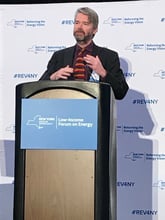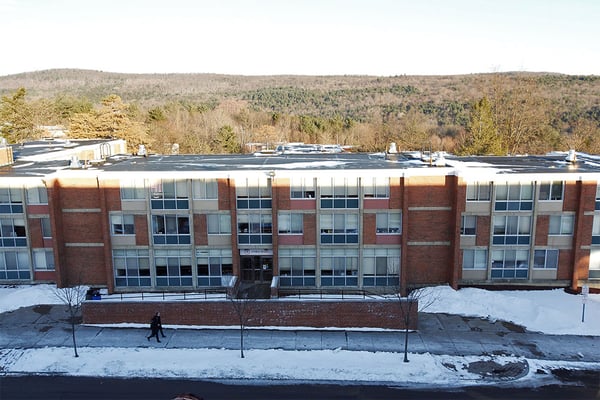New York State Energy Research and Development Authority (NYSERDA) has some of the most advanced policies and programs in the country to support a net zero built environment for existing and new construction homes. Other states would do well to follow their lead.
 The need for more resilient, energy efficient and durable buildings in America has never been more critical. The aging housing stock, concerns about global warming and building resilience, as well as the need to reduce greenhouse gas emissions are now the impetus for even the most reluctant of governments to work collaboratively with industry to tackle improvements in the built environment, where 40 percent of our energy use goes. While it’s clear the time to address energy use in buildings is now, there are jurisdictions throughout the country that haven't yet developed a building energy efficiency action plan. The New York State Energy Research and Development Authority (NYSERDA) has developed a model for tackling low- and net-zero energy building retrofit and new construction programs — and it’s a model that other jurisdictions can learn from and replicate. (Photo: NYSERDA'S Greg Hale).
The need for more resilient, energy efficient and durable buildings in America has never been more critical. The aging housing stock, concerns about global warming and building resilience, as well as the need to reduce greenhouse gas emissions are now the impetus for even the most reluctant of governments to work collaboratively with industry to tackle improvements in the built environment, where 40 percent of our energy use goes. While it’s clear the time to address energy use in buildings is now, there are jurisdictions throughout the country that haven't yet developed a building energy efficiency action plan. The New York State Energy Research and Development Authority (NYSERDA) has developed a model for tackling low- and net-zero energy building retrofit and new construction programs — and it’s a model that other jurisdictions can learn from and replicate. (Photo: NYSERDA'S Greg Hale).
Addressing Existing Building Stock
Current projections show more than 75 percent of New York State’s 2050 building stock is already standing, according to Greg Hale, senior advisor, energy efficiency markets and finance with NYSERDA. With a goal of having a carbon-neutral statewide building stock by mid-century, NYSERDA set its focus on a significant increase in net zero new construction and retrofits and it’s tapping business, industry, the manufacturing sector, governments and community organizations to aid in the effort.
With such an aggressive reduction target, retrofitting energy-wasting existing building stock is a priority. NYSERDA’s RetrofitNY initiative is creating standardized, scalable solutions to improve the aesthetics and comfort of residential buildings while dramatically improving energy performance. RetrofitNY is based on a successful approach developed by Energiesprong, a European program that has completed 4,500 net zero retrofits, and over 5,000 net zero newly constructed units, with 18,000 more in the pipeline. (Energiesprong is primarily focused on social housing buildings, similar to low-rise garden style apartments, and residence halls at the State University of New York.)
RetrofitNY is transforming the building renovation industry through four key actions:
- Aggregating demand among building owners, harnessing their collective market power
- Mobilizing the building industry to drive innovation, availability and cost compression of relevant technologies
- Working with financial organizations to fund projects capturing energy savings
- Engaging regulatory agencies to help facilitate widespread adoption

(Above: Ford Hall on the campus of SUNY Oneonta will be home of the first zero-net carbon-ready retrofit project on a SUNY campus).
A proof-of-concept for low and mid-rise residential building net zero energy retrofits is in development with the target of improving living space comfort and indoor air quality as well as the aesthetics of the current building supply. (see Energiesprong video) Additional objectives include providing substantial savings on utility and maintenance expenses for building owners and residents and using those savings to help finance the improvements.
New Construction: Not Breaking the Bank
While existing buildings comprise most of the stock in New York, approximately 100 million square feet of new construction is built each year. “Once a building is constructed, it is in operation for 50-100 years. It becomes much more expensive to execute significant energy and carbon reducing measures after the building is completed,” Hale said. “As a result, NYSERDA also has numerous programs focused on new construction.”
For example, NYSERDA offers incentives that help builders engage in efficiency planning and optimize building performance, as it is essential to incorporate low- and carbon neutral measures and design features as early as possible in each building’s initial design phase.
Of course, with new residential construction, builders can dramatically impact energy performance for the better while also keeping costs at a minimum. “We believe that establishing key elements of a net zero building industry and fostering processes that promote steady cost compression can bring the cost of net zero construction below today’s “business as usual” for conventional construction and drive economic development opportunities within the state,” Hale noted.
“For certain building typologies, particularly low and mid-rise multifamily and commercial buildings, significant cost compression can come through larger scale development of prefabricated, integrated component-based construction.”
Hale notes that builder adoption of increasingly efficient homes like net zero is driven by the builders’ desire to provide a superior product to customers that reduces the customers’ ongoing operational expenses. “Through their efforts to provide customers with a more desirable product – one with an improved indoor environment, reduced operational costs and increased comfort, builder practices are aligning with the state’s efforts to combat climate change.”
“We are seeing significant movement in the market currently and know it is where we will need to continue to see more movement for the market to achieve the scale required for New York to reach its ambitious climate goals.”
Innovation and Action Yield Results
Statewide, New Yorkers pay about $31 billion annually for electricity and heating fuels and buildings are responsible for 56 percent of statewide greenhouse gas emissions from fuel combustion, according to Hale. “By fostering innovation to deliver low- and net zero-carbon energy efficiency solutions, New York will cut emissions by cost-effectively reducing electricity and building fuel demand across the state.” Public-private partnerships and collaborations play an important role in making change happen and without them, transforming New York State’s energy system would not be possible. “We know we need to deliver carbon reductions to safeguard communities and our planet, and New York’s plan is to transition to a carbon neutral economy within a cost-effective framework while providing as much flexibility as possible to avoid unintended economic harm.”





